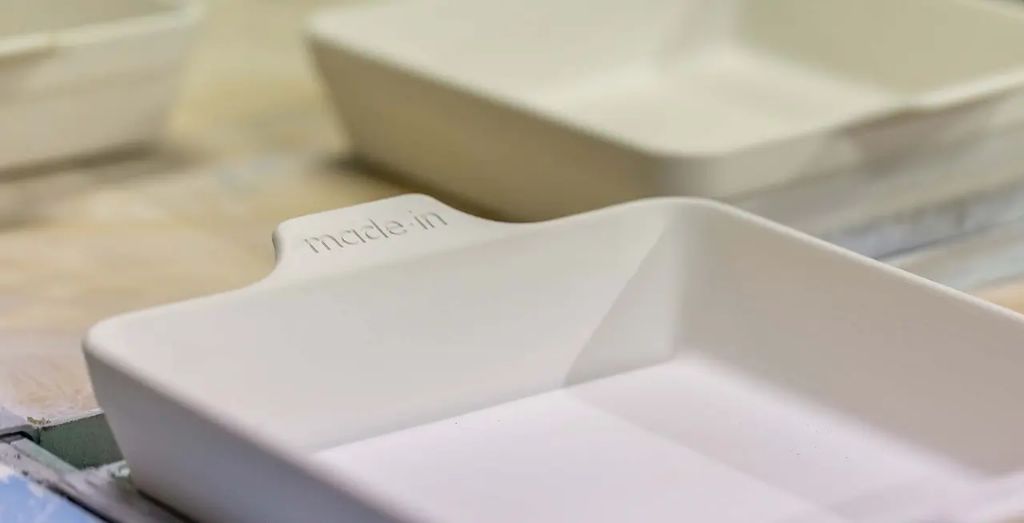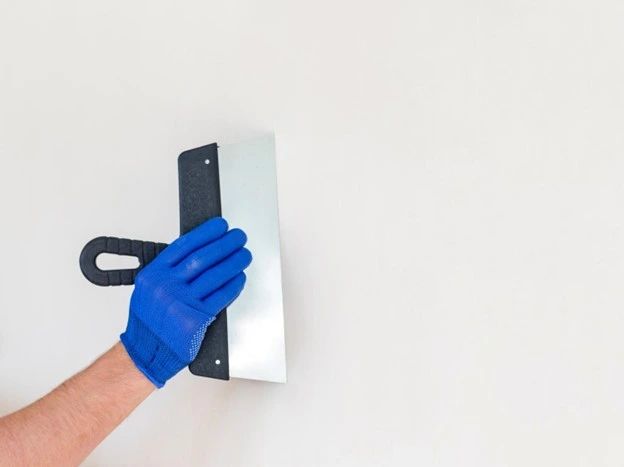Is It Safe To Put Porcelain In The Oven?
What is porcelain?
Porcelain is a type of ceramic made from kaolin clay that is fired at very high temperatures between 2,200 and 2,500 degrees Fahrenheit. The high heat causes the clay particles to densify and vitrify, resulting in a non-porous, hard, and durable material (Farandaway.co, 2024).
Porcelain differs from other types of ceramic, like stoneware and earthenware, in a few key ways:
- Porcelain uses kaolin clay, which is more refined and pure than other clay bodies. This allows porcelain to be fired at higher temperatures.
- The high firing temperature makes porcelain non-porous and gives it a glass-like surface that is smooth, hard, and impervious to water. Other ceramics are more porous.
- Porcelain is highly durable and resistant to chipping, cracking, staining, and thermal shock. It maintains its strength when thinly fabricated.
- The high firing process makes porcelain white in color. It can be decorated with colorful glazes.
In summary, porcelain is distinguished from other ceramics by its refined white clay body, lack of porosity, high strength, and resistance to damage (Tileamerica.com, 2024). These qualities make porcelain well-suited for use in cooking, dinnerware, sanitaryware and more.
Porcelain’s heat resistance
Porcelain is known for its durability and ability to withstand very high temperatures before cracking or melting. According to a source, high-quality porcelain can typically resist temperatures ranging from 1,200°F to 2,000°F (Source). This makes it significantly more heat-resistant than materials like plastic or glass.
On Reddit, users discussed how different types of porcelain clay can withstand even higher temperatures. Pure kaolin clay can resist temperatures up to 1750-1800°C before melting, while refractory clays specially engineered for high heat applications can go even higher (Source).
So in summary, high-quality porcelain is extremely durable in high heat environments, withstanding temperatures between 1200-2000°F in typical applications. More advanced porcelain clays can resist even higher temperatures near or above 1800°C.
Factors that affect porcelain’s oven safety
Certain factors can affect whether porcelain is safe to use in the oven or not:
Glazes and decorations – According to Is Porcelain Oven Safe? – Using Porcelain in the Oven, the glazes and decorations on porcelain can impact oven safety. Older glazes sometimes contain lead, cadmium or other toxic materials that could leach chemicals when heated. Make sure any glazed or decorated porcelain is specifically labeled as oven-safe.
Porcelain type – Not all porcelain is created equal. Porcelain dinnerware is typically oven-safe, but more delicate porcelain like bone china may be at higher risk for thermal shock fractures according to Can Porcelain Really Go in the Oven?. Bone china contains more bone ash making it lighter and more porous. Care should be taken when using finer porcelain in the oven.
Cracks or flaws – Even minor cracks, chips or crazing in the glaze can compromise the porcelain’s structural integrity and lead to breaks when exposed to high oven temperatures according to How to Safely Use Porcelain Plates in the Oven for Cooking. Always inspect porcelain carefully before placing in the oven and avoid using any pieces with existing damage.
Recommended oven uses
Porcelain is an excellent material for many baking and oven dishes when used properly. Some of the most common recommended uses for porcelain bakeware include:

Baking dishes
Rectangular and oval porcelain baking dishes are ideal for roasting vegetables, baking casseroles, and cooking dishes like lasagna. According to Made in Cookware, porcelain baking dishes provide even heat distribution and allow food to cook evenly [1]. Just be sure to verify the maximum oven-safe temperature for your specific dish.
Casserole dishes
Round porcelain casserole dishes with lids are perfect for slow cooking stews, soups, baked beans, and more. The Mala Casa blog notes porcelain casseroles can be safely used for cooking meat, casseroles, and baked goods up to 572°F [2].
Pie plates
Porcelain pie plates conduct heat evenly for perfectly golden crusts. Mamaison recommends using porcelain pie dishes and tart pans for baking fruits pies, quiches, and other baked goods [3]. Just avoid sudden temperature changes that could crack the porcelain.
Not Recommended for the Oven
While some types of porcelain can withstand the high temperatures inside an oven, other porcelain items are not designed to be heated and can crack or break. According to MadeinCookware.com, “As with any material, not all porcelain is created equal.”
Certain porcelain pieces should be avoided in oven use:
- Decorative figurines – Intricately designed porcelain figurines are made from porcelain clay mixtures optimized for decorative purposes, not oven safety. The details that make figurines beautiful are vulnerable to heat damage.
- Antique or vintage porcelain – Porcelain production methods have advanced over time. Old or antique porcelain is more likely to have properties that make it unsuitable for oven use compared to modern porcelain designed for high heat.
- Plain white mugs – Basic monochromatic mugs without oven-safe labeling lack the material specifications needed for safe oven use. Their composition may not withstand oven temperatures.
Porcelain pieces not explicitly marketed as oven, stove, or microwave safe should be kept out of high heat cooking situations. Check labels, markings, or product details before attempting to use decorative or vintage porcelain in the oven.
Safe heating tips
There are several important steps to safely use porcelain in the oven:
First, preheat the oven fully before placing porcelain dishes inside. Porcelain is susceptible to thermal shock, so gradually heating the dish prevents cracks or breakage. According to this source, preheating allows porcelain to warm up slowly along with the oven temperature.
Second, allow porcelain to cool down gradually after cooking or baking. Avoid putting a hot porcelain dish on a cold surface or running it under cool water. The sudden temperature change can cause the porcelain to crack or shatter. Let it cool down slowly in the oven or on a hot pad.
Finally, always use oven mitts when handling hot porcelain dishes. The mitts protect your hands from burns. They also give you a better grip on potentially slippery porcelain to avoid drops and breaks.
Signs of unsafe porcelain
Porcelain that is safe for oven use should remain in pristine condition with no visible signs of damage. However, there are several indicators that porcelain may no longer be oven-safe:
Hairline cracks
Even tiny hairline cracks in the glaze can compromise porcelain’s structure and lead to further cracking or shattering under high oven heat, according to Malacasa. Cracks tend to worsen with repeated high heat exposure.
Crazing
Crazing refers to a network of fine cracks that can develop on porcelain surfaces from long-term use. According to Made In Cookware, crazing occurs over time as porcelain expands and contracts during heating/cooling cycles. Even minor crazing indicates the porcelain should no longer be used in the oven.
Discoloration
If porcelain changes color, such as turning grey, yellow, or developing dark spots, this likely means the glaze has been compromised, advises The Pottery Wheel. Discoloration usually happens from overheating and is a sign the porcelain is no longer oven-safe.
Deformation
According to Made In, deformities like warping, bending, or sagging show structural damage from overheating. Do not use deformed porcelain in the oven, as further exposure to heat will likely worsen the damage or cause shattering.
What to do if porcelain cracks
If you notice any cracks or crazing in your porcelain cookware, stop using it immediately for oven or stovetop cooking. Cracks compromise the structural integrity of the dish and increase the risk of it shattering when exposed to heat or direct flame.
Unfortunately, cracks in porcelain are not repairable. Once the glaze is damaged, the dish becomes permanently weakened. The cracks will likely worsen with continued use. It’s best to retire any cookware with cracks or crazing marks.
However, lightly cracked porcelain pieces may still be safe for non-oven uses if the cracks are minor. You can use them as decorative serving dishes, for cold foods storage in the fridge, or as baking pans for recipes that don’t require cooking, like no-bake desserts. But refrain from microwaving cracked porcelain as the rapid heating can further damage the glaze.
Inspect porcelain for any cracks or crazing before each use. At the first sign of damage, stop oven or stovetop cooking to prevent the dish from breaking apart while in use.
Proper porcelain care
When it comes to caring for your porcelain pieces, experts recommend handwashing them instead of placing them in the dishwasher. According to Mala Casa, handwashing porcelain allows you to inspect each piece and ensure no damage occurs during cleaning (source). Handwashing also gives you more control over the water temperature.
You’ll want to avoid exposing porcelain to extreme temperature changes. For example, don’t take a piece of porcelain straight from the oven and place it into cold water – this rapid change in temperature can cause cracks or breaks. Instead, allow porcelain to cool to a warm temperature before washing (source). With proper handwashing and care, your porcelain can maintain its beauty for many years.
Summary
Most porcelain is oven-safe if used properly. Porcelain is a type of ceramic that is extremely hard and smooth with high heat resistance. As long as the porcelain does not have defects like hairline cracks, it should be able to withstand the high temperatures inside a standard oven. However, there are some guidelines to follow for safe oven use.
Vintage or antique porcelain should be avoided in the oven, along with any pieces that are highly decorated or have existing damage. Allowing gradual heating and cooling of the porcelain inside the oven is also recommended, rather than sudden temperature changes which could lead to cracking. As long as the porcelain is heated and cooled gradually, most standard porcelain plates, cups, bowls, and bakeware should remain intact at typical baking temperatures.
It’s important to discontinue use if any cracks, chips, or other damage develops during oven use. Cracks indicate the porcelain piece can no longer withstand the heat. With proper care and caution, most modern, high-quality porcelain can be safely used in the oven for baking, roasting, and other standard oven cooking tasks.


